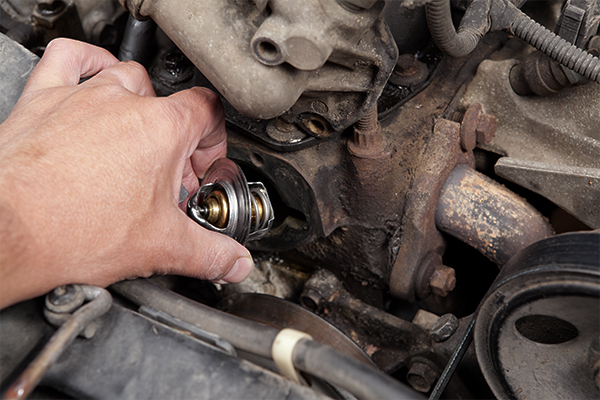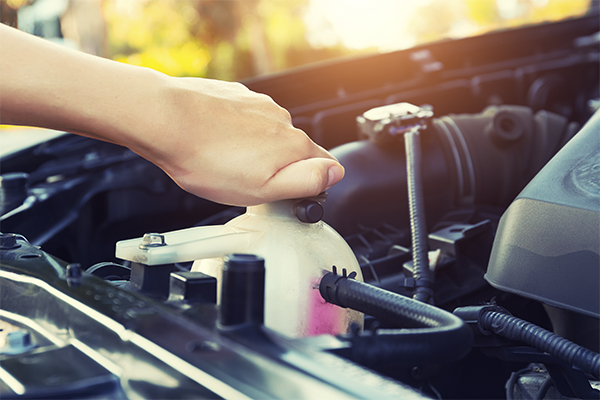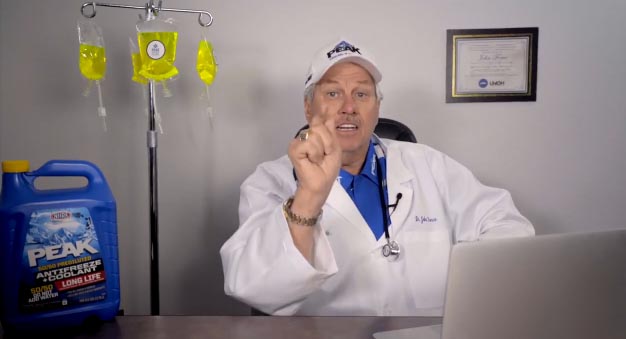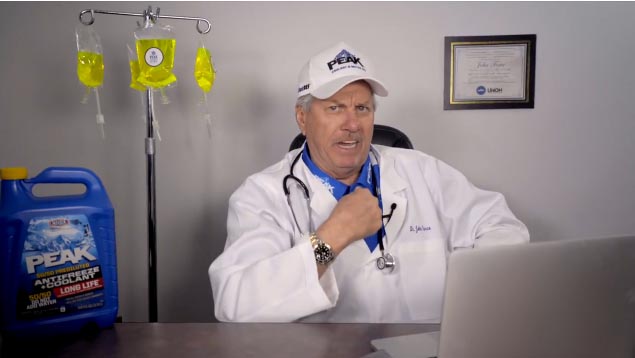The water pump's name is a throwback to motoring's early days when engines were cooled by water alone, unlike today's vehicles that use a mixture of water and antifreeze. What hasn't changed is the water pump's importance in preventing the engine from overheating, making it a crucial component of a vehicle's cooling system. Here's how it works and why replacing it could be a money-saver.
We also recommend:
How a Vehicle Cooling System Works
How the water pump works to cool the engine
Whenever internal combustion engines are running, they're generating heat (and a lot of it) with temperatures under the hood soaring to more than 200 degrees. Once an engine reaches optimal operating temperature, that excess heat has to be removed to prevent the buildup of high temperatures that will cause engine damage. This is where the water pump comes in. It sucks antifreeze from the radiator and circulates it through and around the engine. That engine heat is transferred from the engine block to the antifreeze, which then flows back to the radiator where it's cooled, and the process begins anew.
On most vehicles, the water pump is driven by the engine's serpentine belt, which is connected to the pump's pulley. The pulley and belt work together to move coolant through these steps:
- Coolant is sucked in at the center of the impeller
- Centrifugal force pushes it out through the impeller blades
- It then goes through a scroll, which directs the coolant flow into the engine without reducing its velocity
Most water pumps also have a weep hole that allows a small amount of coolant to seep out of it. However, if you see a constant flow of coolant from the hole, it means the seal has failed and the pump needs to be replaced. Some vehicles also use an electric water pump that is powered by an electric motor instead of the serpentine belt.

Water Pump Impeller | Source: Lisa Kowite
Signs your water pump may be failing
The only downside with water pumps is that they don't last forever and need to be replaced periodically. (We'll discuss when a little later.) The pump's numerous gaskets and seals can become brittle with age and can crack, or the pulley's bearings can go bad, both of which lead to failure.
When a water pump does fail, it's a major problem because it means coolant is no longer adequately circulating, temperatures are rising and overheating is soon to follow. Fortunately, water pumps oftentimes provide some advance warning that they're going to fail. Here are some clues to be on the lookout for:
- Coolant leaking onto the ground. This is probably the easiest one to spot. Any coolant leak is cause for concern, but when it's related to the water pump, the leak will appear on the ground near either the front or the center of the engine, and the liquid will be either a green, orange/red or possibly blue color. Don't mistake the water you see dripping under the car on a hot summer's day while the vehicle's A/C is running with a coolant leak. This water is a normal byproduct of the A/C system and won't be colored like antifreeze is. Even if you don't see coolant leaking onto the ground, if you're having to add coolant on a regular basis, it means there is a leak somewhere in the system. Try using a cooling system pressure tester to pinpoint the leak.
- Low coolant warning light. If your vehicle is losing coolant — regardless of how fast or slow it's happening — it's a warning sign that there could be a water pump problem. The leak needs to be diagnosed to determine where in the cooling system it's occurring.
- Temperature warning gauge. If the engine temperature gauge or the temperature light are showing that the engine is running hotter than it should be, that's another sign that there's a cooling system problem that could be caused by the water pump.
- Grinding or high-pitched whining noise. These types of noises coming from the engine compartment — particularly if they increase in tandem with engine RPMs — could indicate that the serpentine belt is too loose on the water pump pulley or that the pulley's bearings are going bad.
From spring compressors to specialized pullers and more, we've got the tools you need to get the job done right. The Advance Auto Parts Loaner Tool Program is easy — if you don't have your own cooling system pressure tester, borrow one from your local store.

Water Pump Pulley | Source: Lisa Kowite
When to replace a water pump
As soon as a water pump shows signs of failure, it needs to be replaced. And, because of the pump's location under or behind the timing belt cover, most vehicle manufacturer specifications and auto technicians recommend replacing the water pump at the same time the timing belt is replaced (usually around the 100,000 mile mark) even if the pump isn't exhibiting any signs of failure. That's partially because of the time, effort and expense associated with replacing a timing belt. You don't want to do that job and not replace the water pump, only to have the water pump fail a few months later and have to go back in and repeat most of the same work.
For all its importance in protecting the engine from damage, a water pump isn't a super expensive part, usually costing around $100 to $150, which is all the more reason to replace it at the first sign of trouble.

Periodically check your vehicle's coolant level, but only when the engine is cool. A sudden or gradual loss of coolant could indicate a problem with the water pump.








